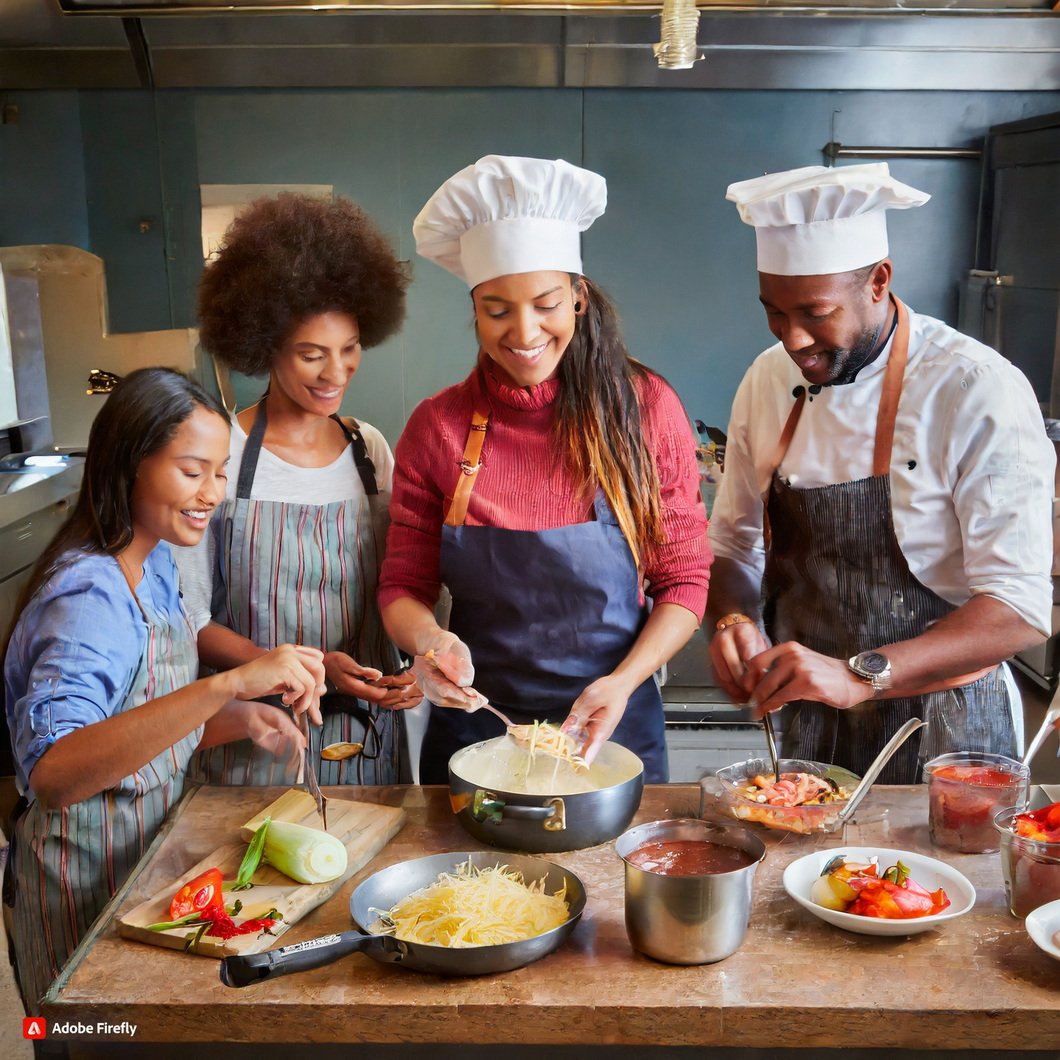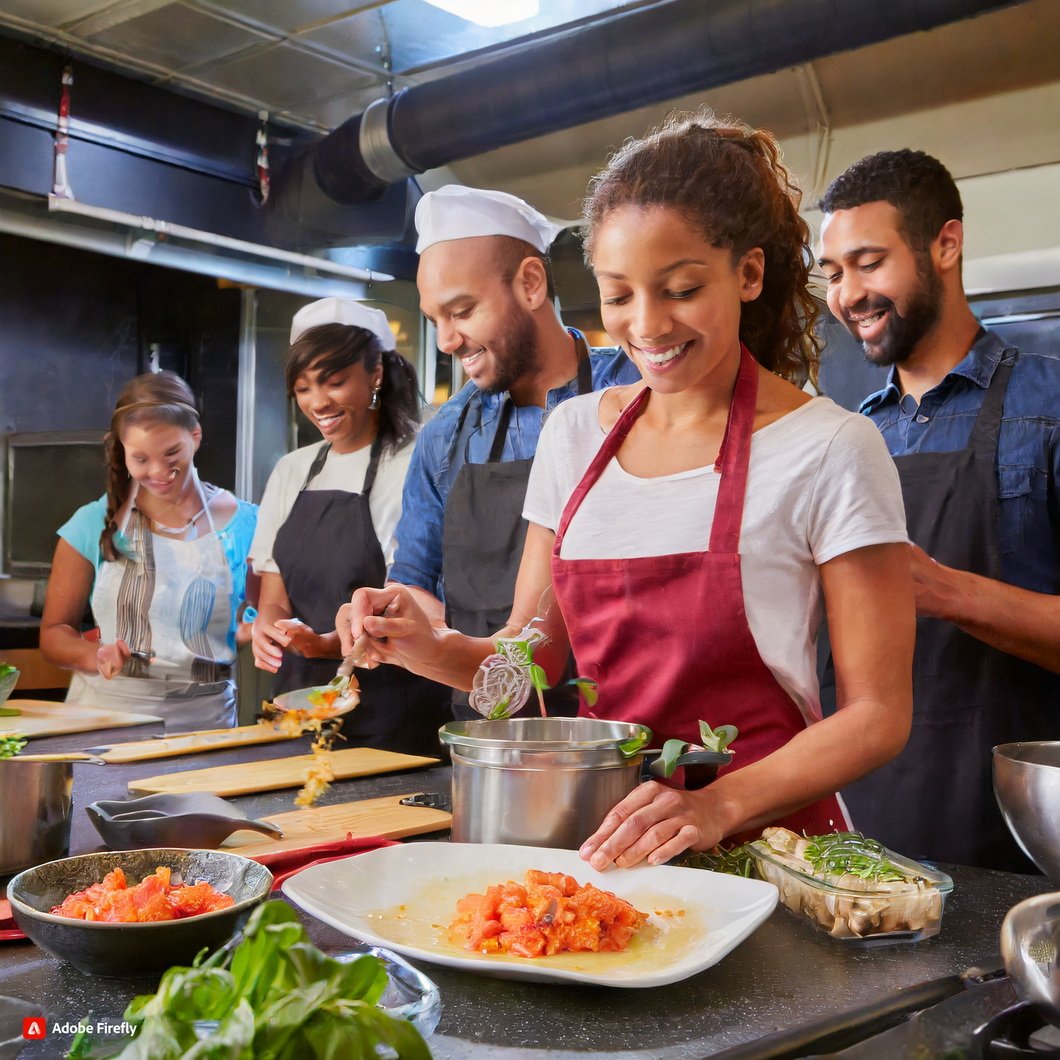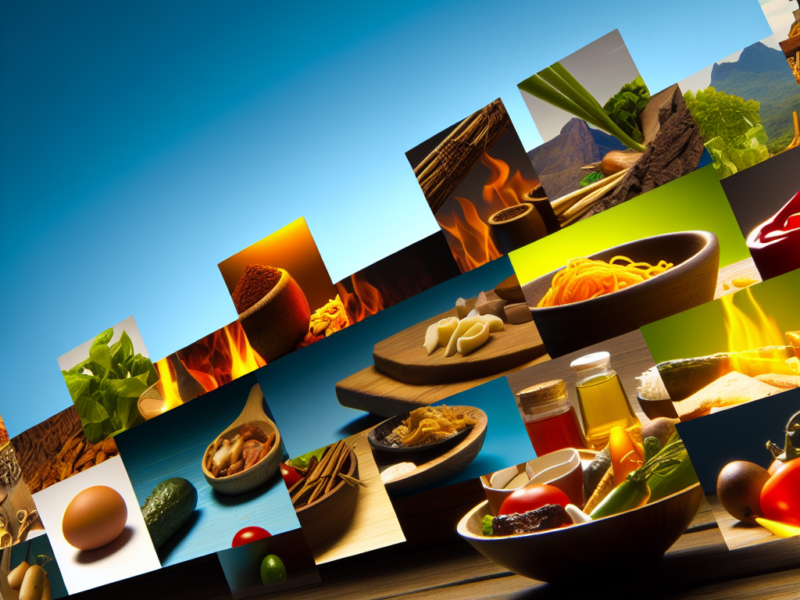Introduction
Colonial Cuisine Chronicles is a fascinating exploration of the Culinary influences that shaped the cuisine of bygone eras. Through this series, we delve into the rich history of colonial times and discover how different cultures and traditions have contributed to the development of unique and diverse dishes.

From the spices of the East to the hearty stews of Europe, Colonial Cuisine Chronicles takes us on a journey through time to uncover the origins of some of our favorite foods. Join us as we uncover the delicious and often surprising stories behind the dishes that have stood the test of time.
5 Colonial Ingredients That Shaped Modern Cuisine
Welcome to the Colonial Cuisine Chronicles, where we take a journey back in time to explore the Culinary influences of bygone eras. In this section, we will be delving into 5 colonial ingredients that have shaped modern cuisine. From spices to staple foods, these ingredients have left a lasting impact on the way we eat today.

First on our list is the humble potato. While potatoes may seem like a common and unremarkable ingredient now, they were actually a game-changer during the colonial era. Originating from South America, potatoes were introduced to Europe in the 16th century and quickly spread to other parts of the world through colonial trade. They were a reliable and easy-to-grow crop, making them a staple food for many colonists. Today, potatoes are a key ingredient in many dishes, from fries to mashed potatoes, and have become a beloved comfort food for people all over the world.
Next up, we have sugar. While sugar may seem like a simple ingredient, its impact on colonial cuisine was immense. During the colonial era, sugar was considered a luxury item and was heavily imported from the Caribbean. It was used to sweeten dishes and drinks, and also played a major role in the development of the rum industry. Today, sugar is a ubiquitous ingredient in many desserts and baked goods, and its production and consumption continue to shape global economies.
Moving on to spices, we cannot talk about colonial cuisine without mentioning the spice trade. Spices such as cinnamon, nutmeg, and cloves were highly sought after during the colonial era and were used to add flavor and depth to dishes. These spices were mainly imported from Asia and were considered a symbol of wealth and status. Today, these spices are still widely used in cooking, and their presence in dishes adds a touch of exoticism and nostalgia for the colonial era.

Another colonial ingredient that has had a lasting impact on modern cuisine is coffee. Originating from Ethiopia, coffee was introduced to the Western world through colonial trade. It quickly became a popular beverage among the colonists and was also used in cooking and baking. Today, coffee is a staple in many households and is enjoyed in various forms, from a simple cup of black coffee to elaborate espresso-based drinks. Its popularity and widespread consumption can be traced back to its introduction during the colonial era.
Last but not least, we have corn. Native to the Americas, corn was a vital crop for many indigenous communities and was later introduced to the rest of the world through colonial trade. It was used in a variety of dishes, from cornbread to tortillas, and its versatility made it a staple food for many colonists. Today, corn is still a major ingredient in many cuisines, and its presence can be seen in dishes such as tacos, polenta, and popcorn.
In conclusion, these 5 colonial ingredients have played a significant role in shaping modern cuisine. From staple foods to luxury items, they have left a lasting impact on the way we eat and cook today. So the next time you enjoy a plate of mashed potatoes or a cup of coffee, remember the rich history and cultural influences behind these seemingly simple ingredients. Stay tuned for more colonial cuisine chronicles as we continue to explore the fascinating world of Culinary influences from bygone eras.
The Evolution of Spices in Colonial Cooking: From Trade Routes to Flavor Profiles
Welcome to the Colonial Cuisine Chronicles, where we take a journey back in time to explore the Culinary influences of bygone eras. In this section, we will delve into the evolution of spices in colonial cooking, from their origins in trade routes to their impact on flavor profiles.
Spices have played a significant role in human history, with their use dating back to ancient civilizations. However, it was during the colonial era that spices truly became a global commodity, thanks to the expansion of trade routes and the exploration of new lands.

The spice trade was a lucrative business, with spices such as cinnamon, pepper, and nutmeg being highly sought after by European countries. These spices were not only used to enhance the flavor of food but also for medicinal purposes and as a status symbol.
As European countries established colonies in different parts of the world, they were introduced to new spices that were previously unknown to them. This led to a fusion of flavors and the birth of colonial cuisine.
One of the most significant impacts of the spice trade was the introduction of new flavors to traditional European dishes. For example, the Portuguese brought chili peppers from South America to India, where they were incorporated into local dishes, giving birth to the famous Vindaloo curry. Read Recipes Weight Loss Salads.
Similarly, the Dutch introduced nutmeg and cloves to Indonesia, where they were used in dishes such as Rendang, a spicy beef curry. These new flavors not only added depth to traditional dishes but also created entirely new ones.
The spice trade also had a significant impact on the economy of colonial countries. The Dutch, for instance, monopolized the nutmeg trade in the 17th century, leading to the infamous “Nutmeg Wars” with the British. This competition for control over the spice trade led to conflicts and wars between European countries, further highlighting the value and importance of spices.
Apart from their use in cooking, spices also played a crucial role in preserving food. In the days before refrigeration, spices were used to mask the taste and smell of spoiled food. For example, the British used a blend of spices called “pickling spice” to preserve meat and fish during long sea voyages. Read easy Healthy Lunch for Weight Loss.
The use of spices in colonial cooking also had a significant impact on the social and cultural aspects of society. Spices were often used as a symbol of wealth and power, with only the wealthy being able to afford them. This led to the creation of elaborate dishes and feasts to showcase one’s status.
Moreover, the introduction of new spices also led to the exchange of culinary knowledge and techniques between different cultures. This cultural exchange not only enriched the culinary landscape but also promoted understanding and acceptance between different communities.
As the spice trade continued to flourish, new spices were introduced, and existing ones were cultivated in different parts of the world. This led to the creation of unique spice blends and flavor profiles that are still used in colonial cuisine today. Read Bread Recipes.
For example, the famous “Cajun seasoning” used in Louisiana cuisine is a blend of spices such as cayenne pepper, paprika, and garlic, influenced by the French, Spanish, and African cultures that have shaped the region’s history.
In conclusion, the evolution of spices in colonial cooking is a testament to the impact of trade and exploration on the culinary world. The introduction of new flavors, preservation techniques, and cultural exchange have all contributed to the diverse and flavorful colonial cuisine that we know today. So the next time you enjoy a spicy curry or a flavorful Cajun dish, remember the journey of spices from trade routes to your plate.
Q&A – Culinary Influences
Q: What is Colonial Cuisine Chronicles?
A: Colonial Cuisine Chronicles is a book or series that explores the Culinary influences and dishes of bygone eras, specifically during the colonial period.
Conclusion for Culinary Influences
In conclusion for Culinary Influences, Colonial Cuisine Chronicles offers a fascinating exploration of the Culinary influences of bygone eras. Through its detailed accounts of traditional dishes and cooking techniques, the book sheds light on the diverse cultural and historical influences that have shaped colonial cuisine. From the spices of the East to the ingredients of the New World, this book showcases the rich and complex flavors that have been passed down through generations. It is a must-read for anyone interested in understanding the evolution of food and its cultural significance.
Please follow us on linkedin. You can learn all best canadian food recipes you can check our Culinary 1TouchFood Youtube and Telegram 1TouchFood page. Don’t forget Fighting Obesity Magazine and Radio Cooking.

